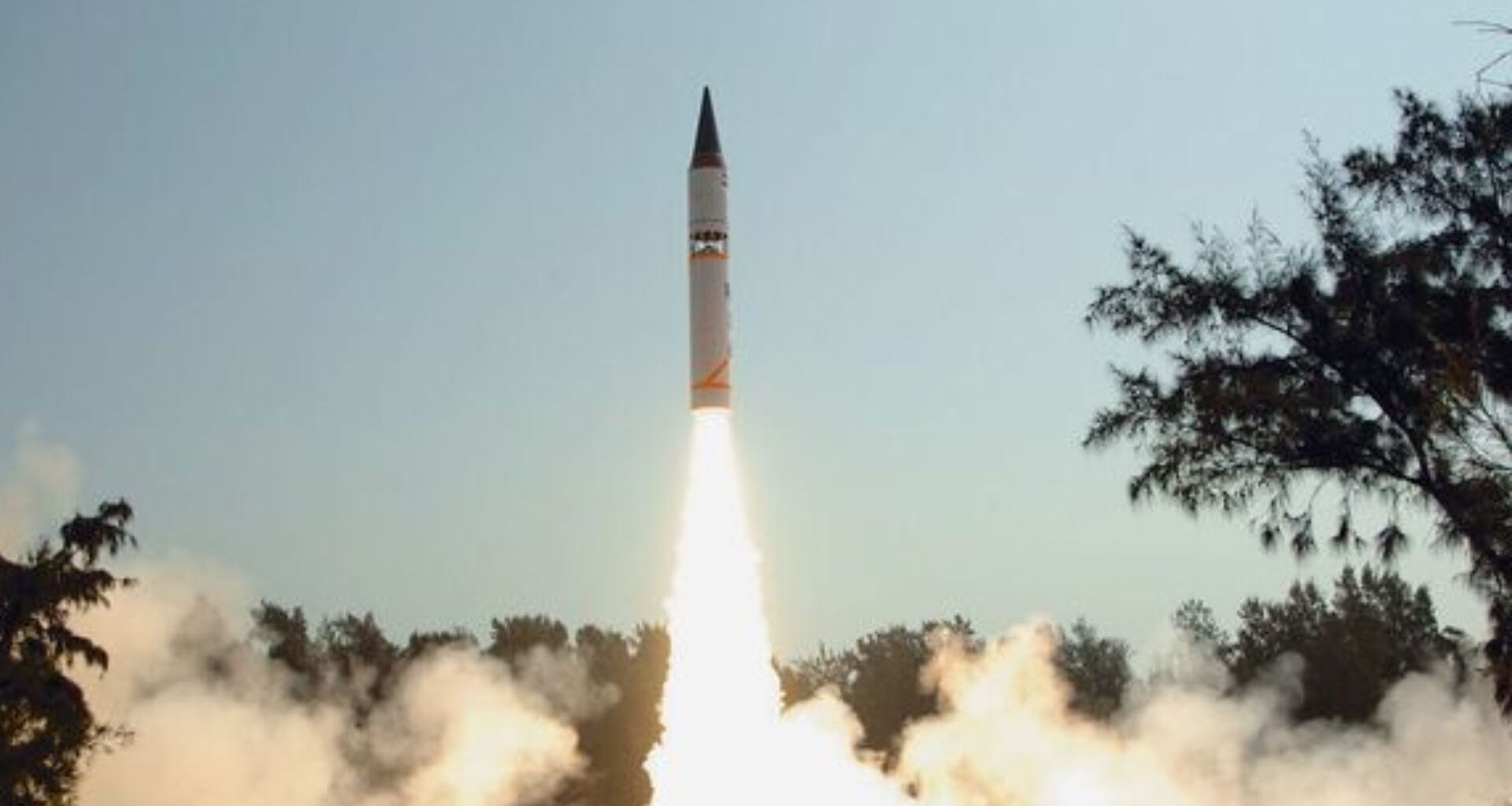India successfully test-fired its nuclear-capable Agni-5 ballistic missile on August 20 to improve its long-range strike capabilities and strengthen its position among the world’s leading missile powers.
The Defense Ministry said the launch took place from the Integrated Test Range at Chandipur in Odisha under the supervision of the Strategic Forces Command.
Officials said the test “validated all operational and technical parameters.”
3,100-mile nuclear-capable missile
The Agni-5 is India’s most advanced land-based missile, with a range of about 5,000 kilometers (3,100 miles).
It is capable of carrying nuclear warheads deep into Asia, placing nearly all of China and parts of Europe within reach.
The system, developed by the Defense Research and Development Organisation (DRDO), uses a three-stage solid-fuel propulsion design with lightweight composite motor casings in its later stages to extend range and improve efficiency.
The missile is part of the wider Agni series, which includes shorter-range variants already deployed with India’s armed forces.
Agni-1 through Agni-4 cover ranges from 435 to 2,200 miles, while Agni-Prime provides a canisterized medium-range option.
However, Agni-5 is the backbone of India’s nuclear deterrence, offering the longest reach of any missile currently in operational service.
Wednesday’s test comes amid India’s steady push to modernize its nuclear arsenal and delivery systems.
Last year, India conducted the first flight test of a Multiple Independently Targetable Reentry Vehicle (MIRV) variant of the Agni-5, codenamed Mission Divyastra.
That test demonstrated the ability to carry and deploy several warheads from a single missile, each capable of striking separate targets hundreds of kilometers apart.
MIRV technology complicates adversary missile defenses and places India alongside the United States, Russia, China, France, and the United Kingdom as one of the few nations with the capability.
The Agni-5’s expanding capabilities signal New Delhi’s intent to maintain credible deterrence against China and Pakistan.
China’s growing arsenal of intercontinental missiles and its expanding missile-defense network have driven India’s missile modernization.
The MIRV-equipped Agni-5 is seen as a direct response, designed to ensure the survivability of India’s nuclear deterrent in the face of advanced interception systems.
India’s growing arsenal of missiles
The Defense Ministry has not confirmed when the MIRVed Agni-5 variant will be fully operational.
Reports suggest DRDO is also pursuing upgraded versions with specialized roles, including a bunker-buster warhead designed to penetrate hardened underground facilities and an airburst variant optimized for disabling runways and fortified positions.
India has consistently framed its ballistic missile program as part of its “credible minimum deterrence” strategy and its declared no-first-use nuclear policy.
The doctrine highlights a survivable second-strike capability rather than a first-strike posture.
In recent years, India has expanded testing of various nuclear and conventional systems. Last month, the military successfully launched short-range ballistic missiles Prithvi-II and Agni-I.
In July, India tested its newly developed Pralay tactical missile, capable of carrying up to 1,000 kilograms of conventional warheads.
Together with the Agni-5, these systems provide layered strike options across different ranges.
The Wednesday’s launch is likely to raise concerns in Pakistan, which lacks MIRV-capable missiles, and in China, which continues to develop longer-range nuclear delivery systems of its own.
India’s successful launch of the Agni-5 missile is an important step in strengthening its defense capabilities.
The launch is part of a series of scheduled tests to ensure India can effectively use its long-range missile systems in real operations.
